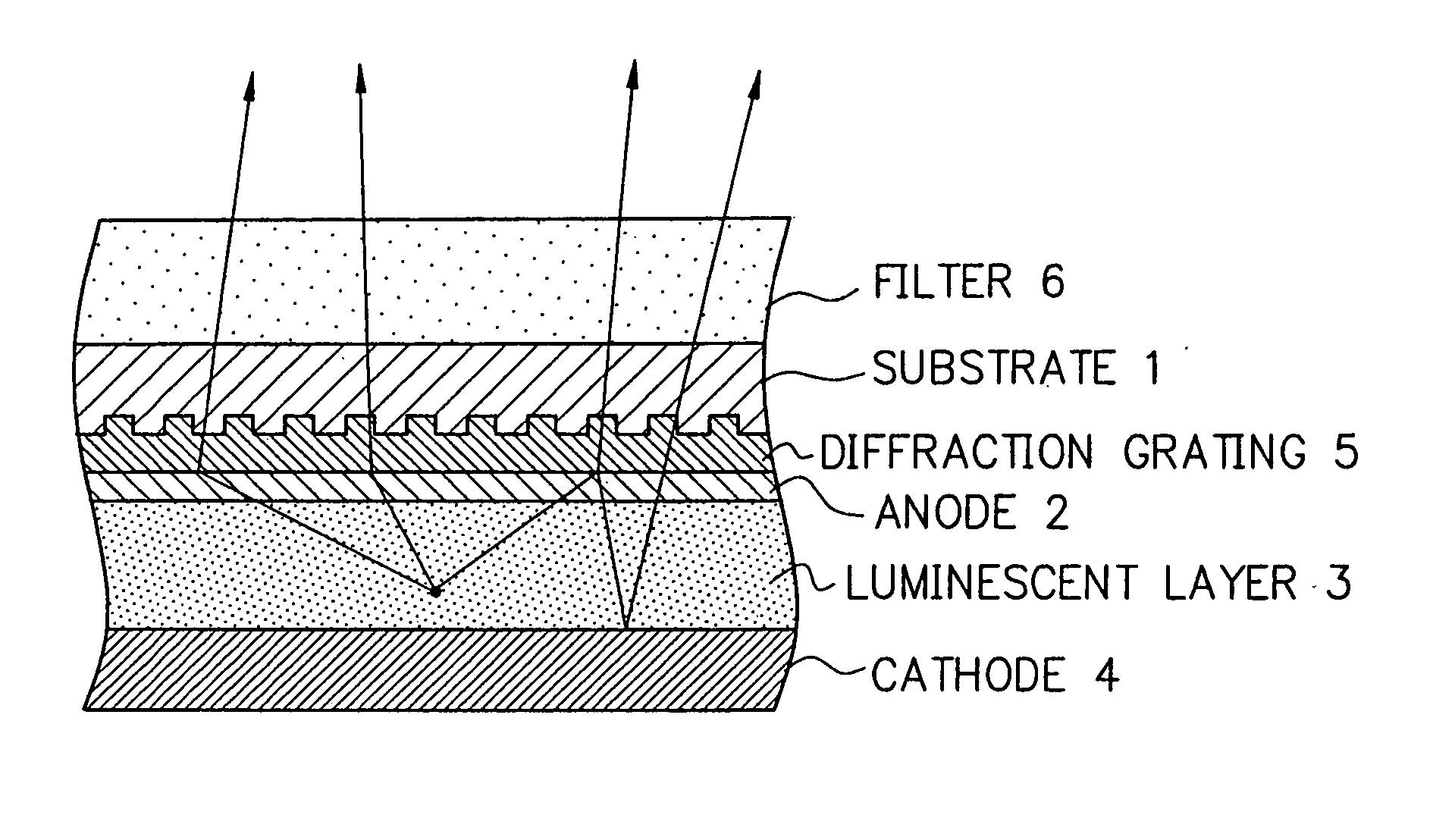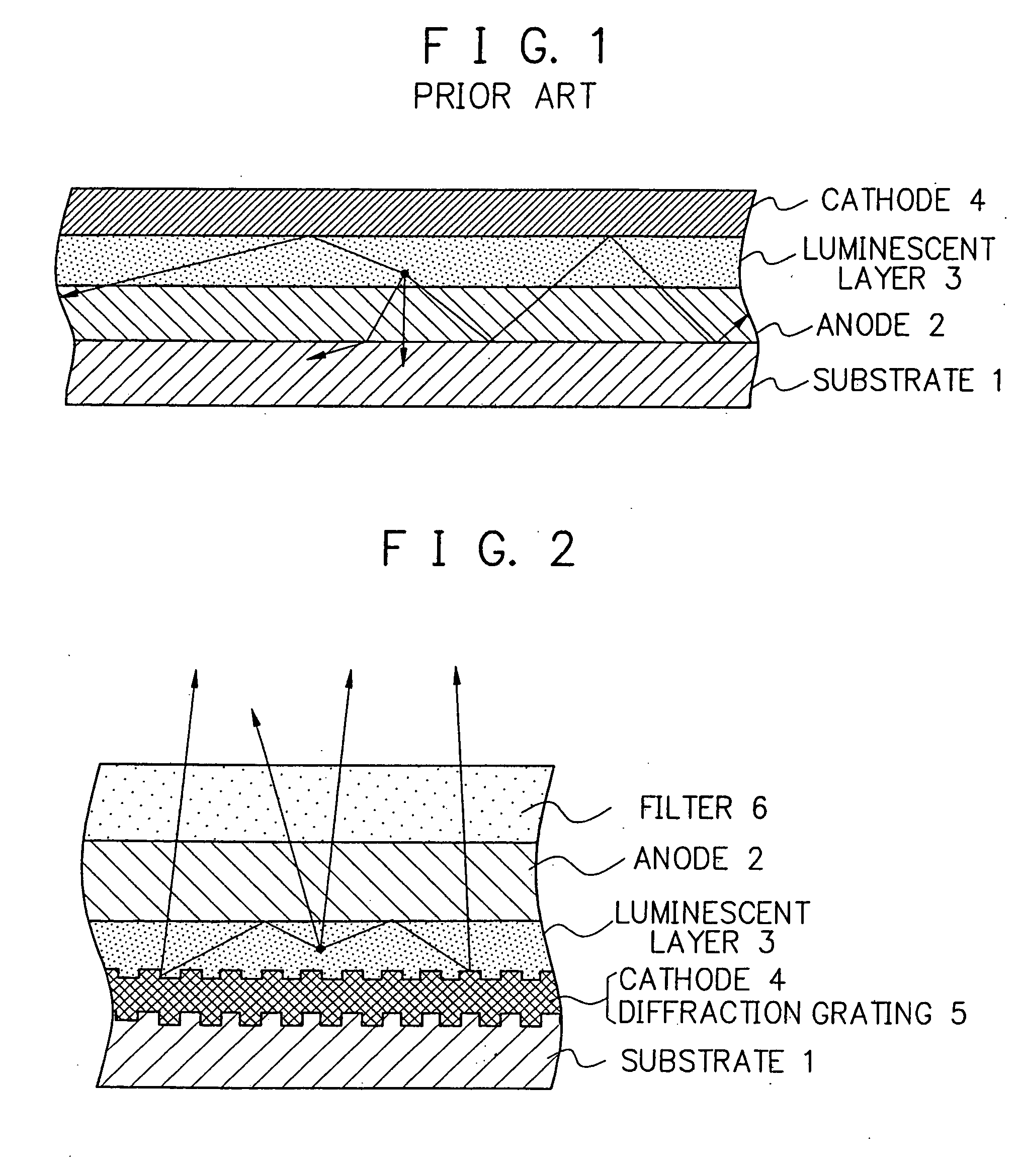Light emitting device and manufacturing method thereof and display used this light emitting device
a technology of light emitting device and manufacturing method, which is applied in the direction of discharge tube luminescent screen, identification means, instruments, etc., can solve the problem of fatal deterioration of the (total) luminescent efficiency, the possibility of light emission is necessitated to have an upper limit, and the difficulty of forming the lens for light convergence or the reflection mirror on the side of the devi
- Summary
- Abstract
- Description
- Claims
- Application Information
AI Technical Summary
Benefits of technology
Problems solved by technology
Method used
Image
Examples
Embodiment Construction
Referring now to the drawings, embodiments of the present invention are explained in detail. Japanese Patent No. 2991183 discloses an organic EL device. In this patent, it teaches that the light extracting efficiency is increased by combining an organic EL element with a diffraction grating or a zone plate. At the embodiments of the present invention, the emitting angle of light being extracted from an organic EL device is limited within a few degrees, by using a diffraction grating having a suitable grating pitch for light emitted from the organic EL device. With this, the light extracting efficiency is increased.
At the embodiments of the present invention, when a function is almost equal to that at the conventional technology, the same reference number is used.
As the diffraction grating at the embodiments of the present invention, both a reflection type and a transmission type can be used. FIG. 2 is a sectional view of a light emitting device using a reflection type diffracti...
PUM
 Login to View More
Login to View More Abstract
Description
Claims
Application Information
 Login to View More
Login to View More - R&D
- Intellectual Property
- Life Sciences
- Materials
- Tech Scout
- Unparalleled Data Quality
- Higher Quality Content
- 60% Fewer Hallucinations
Browse by: Latest US Patents, China's latest patents, Technical Efficacy Thesaurus, Application Domain, Technology Topic, Popular Technical Reports.
© 2025 PatSnap. All rights reserved.Legal|Privacy policy|Modern Slavery Act Transparency Statement|Sitemap|About US| Contact US: help@patsnap.com



